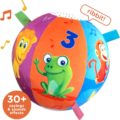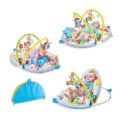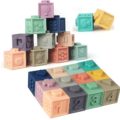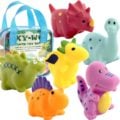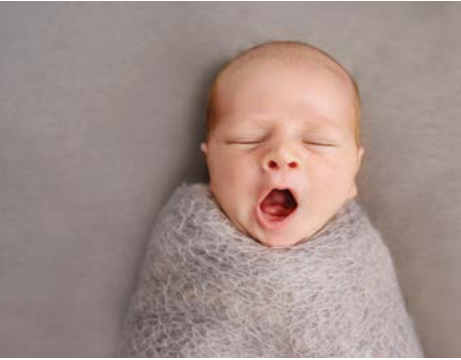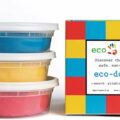If you Google “best toys for babies,” you’ll come up with more than 37 million results. The offerings are varied and extensive, including a $23 NogginStik rattle — “not just a toy, a tool for laying mental growth foundation” — and a melodic snail that promises to “enhance sensory awareness, visual skills and hand-eye coordination.”
Indeed, there are endless opportunities for parents to spend their money and, perhaps, enhance their baby’s mental development.
What’s the deal?
Are parents neglecting their babies if they’re not making a concerted effort to boost their baby’s brain cells? And is there any evidence that “educational” toys are doing what they promise to do?
No, says Susan Gregory Thomas, the author of Buy, Buy Baby: How Consumer Culture Manipulates Parents and Harms Young Minds.
“What they [so-called educational toy companies] talk about is enhancing a baby’s natural curiosity,” said Thomas in an interview with Salon. “But what’s so fascinating about it is that there is absolutely no research that undergirds these statements. … It’s all marketing.”
And marketing can be awfully effective, especially when it preys on the anxieties of parents who want to do everything possible to make sure their kids are set up for success.
Meanwhile, toy companies are well aware of the sales limitations posed by “classic” toys like blocks and balls.
“Standalone toys lack scale and versatility,” said a columnist for The Economist. “Franchises that span multiple platforms — from cartoons to video games to physical toys — are a better bet.”
Hmm, OK.
So, it sounds like the toy industry might be more concerned with bolstering the bottom line than building the brains of the next generation. Barring a move to a deserted island, what can we do to help support the development of our kids?
What kinds of toys are good for babies?
Magda Gerber, a child therapist who developed a philosophy of infant care based on treating infants with respect, had plenty to say on this subject:
“The best play objects for babies are those which allow them to be as active and competent as possible at every stage and of development,” she said.
Gerber emphasized the importance of safety first: Toys must be too big to be swallowed, have no removable parts or sharp edges. Gerber argued that plenty of good play things can be found around the home — cups, bowls and plastic bottles.
Dr. Michael Brody, a child psychiatrist who teaches at the University of Maryland, emphasizes the importance of simplicity and versatility.
“Play is the work of kids, and for that, the basic toys — blocks, baby dolls, pull toys, clay, crayons and paper — are best,” he said in a New York Times article.
This makes me feel way better about my habit of tossing some plastic to-go containers in the direction of my toddler when I need to chop some vegetables: I’m not a semi-negligent mother encouraging my son to play with garbage — I’m a savvy facilitator of self-directed play!
So the next time you go looking for baby toys, forego the Mozart-spewing mechanized mobiles and the “learning walkers,” and focus on the basics — boxes, balls and baskets, for instance. You’ll save some cash while being confident that you’re totally doing what’s best for your baby. Because that’s what we all want, right?
Shannon Keough lives in Minneapolis with her husband and two children. Send questions or comments to [email protected].



